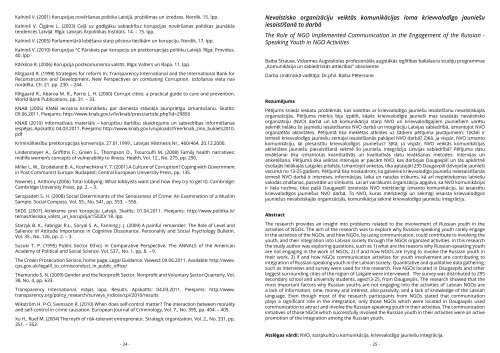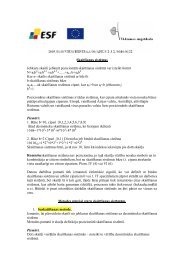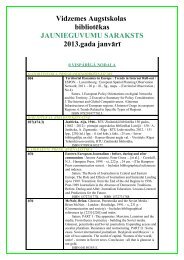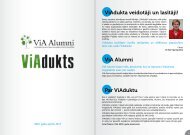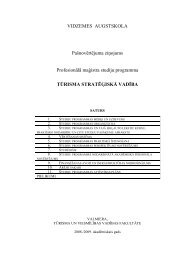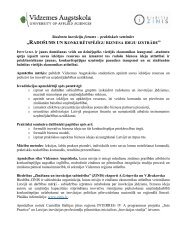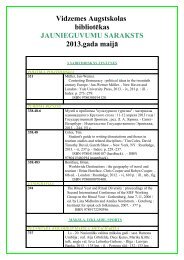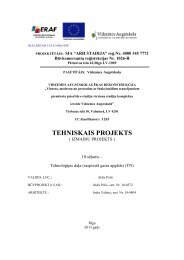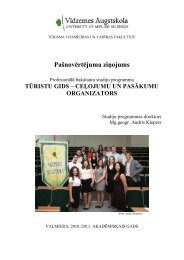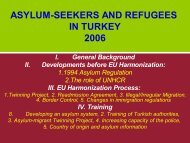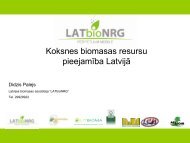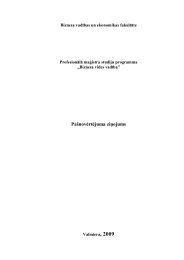Kalniņš V. (2001) Korupcijas novēršanas politika Latvijā, problēmas un izredzes. Nordik. 15. lpp.Kalniņš V. Čigāne L. (2003) Ceļā uz godīgāku sabiedrību: korupcijas novēršanas politikas jaunākāstendences Latvijā. Rīga: Latvijas Ārpolitikas Institūts. 14. – 15. lpp.Kalniņš V. (2005) Parlamentārā lobēšana starp pilsoņa tiesībām un korupciju. Nordik, 17. lpp.Kalniņš V. (2010) Korupcijas °C Pārskats par korupciju un pretkorupcijas politiku Latvijā. Rīga: Providus.40. lppKārkliņa R. (2006) Korupcija postkomunisma valstīs. Rīga: Valters un Rapa. 11. lpp.Klitgaard R. (1998) Strategies for reform In: Transparency International and the International Bank forReconstruction and Development. New Perspectives on combating Corruption. Izdošanas vieta navnorādīta. Ch. 21. pp. 230. – 244.Klitgaard R., Abaroa M. R., Parris L. H. (2000) Corrupt cities: a practical guide to cure and prevention.World Bank Publications, pp. 31. – 33.KNAB (2005) KNAB ierosina krimināllietu par dienesta stāvokļa ļaunprātīgu izmantošanu. Skatīts:09.06.2011. Pieejams: http://www.knab.gov.lv/lv/knab/press/article.php?id=29856KNAB (2010) Informatīvais materiāls – koruptīvu darbību skaidrojums un sabiedrības informēšanasiespējas. Apskatīts: 04.03.2011. Pieejams: http://www.knab.gov.lv/uploads/free/knab_zino_buklets2010.pdfKrimināltiesību pretkorupcijas konvencija. 27.01.1999., Latvijas Vēstnesis Nr., 460/464, 20.12.2000.Lindenmeyer A., Griffiths F., Green E., Thompson D., Tsouroufli M. (2008) Family health narratives:midlife women’s concepts of vulnerability to illness. Health, Vol. 12., No. 275, pp. 290.Miller L. W., Grodeland B. A., Koshechkina Y. T. (2001) A Culture of Corruption? Coping with Governmentin Post-Communist Europe. Budapest: Central European University Press, pp. 135.Nownes J. Anthony (2006) Total lobbying: What lobbyists want (and how they try to get it). Cambridge:Cambridge University Press, pp. 2. – 3.Serajzadeh S. H. (2008) Social Determinants of the Seriousness of Crime: An Examination of a MuslimSample. Social Compass. Vol. 55., No. 541, pp. 553. – 556.SKDS (2007) Attieksme pret korupciju Latvijā. Skatīts: 01.04.2011. Pieejams: http://www.politika.lv/temas/tiesiska_valsts_un_korupcija/15020/ 18. lpp.Starzyk B. K., Fabrigar R.L., Soryal S. A., Fanning J. J. (2009) A painful remainder: The Role of Level andSalience of Attitude Importance in Cognitive Dissonance. Personality and Social Psychology Bulletin.Vol. 35., No. 126, pp. 2. – 3.Suzuki T. P. (1995) Public Sector Ethics in Comparative Perspective. The ANNALS of the AmericanAcademy of Political and Social Science. Vol. 537., No. 1. pp. 8. – 9.The Crown Prosecution Service, home page, Legal Guidance. Viewed: 09.06.2011. Available: http://www.cps.gov.uk/legal/l_to_o/misconduct_in_public_office/Themundo S. N. (2009) Gender and the Nonprofit Sector. Nonprofit and Voluntary Sector Quarterly, Vol.38, No. 4, pp. 633.Transparency International, mājas lapa, Results. Apskatīts: 04.03.2011. Pieejams: http://www.transparency.org/policy_research/surveys_indices/cpi/2010/resultsWikstrōm H. P-O, Svensson R. (2010) When does self-control matter? The interaction between moralityand self-control in crime causation. European Journal of Criminology, Vol. 7., No. 395, pp. 404. – 405.Xu H., Ruef M. (2004) The myth of risk-tolerant entrepreneur. Strategic organization. Vol. 2., No. 331, pp.351. – 352.Nevalstisko organizāciju veiktās komunikācijas loma krievvalodīgo jauniešuiesaistīšanā to darbāThe Role of NGO Implemented Communication in the Engagement of the Russian -Speaking Youth in NGO ActivitiesBaiba Strause, <strong>Vidzemes</strong> <strong>Augstskola</strong>s profesionālās augstākās izglītības bakalaura studiju programmas„Komunikācija un sabiedriskās attiecības” absolventeDarba zinātniskā vadītāja: Dr.phil. Baiba PētersoneRezumējumsPētījums sniedz ieskatu problēmās, kas saistītas ar krievvalodīgo jauniešu iesaistīšanu nevalstiskajāsorganizācijās. Pētījuma mērķis bija izpētīt, kāpēc krievvalodīgie jaunieši maz iesaistās nevalstiskoorganizāciju (NVO) darbā un kā komunikācija starp NVO un krievvalodīgajiem jauniešiem varētusekmēt lielāku šo jauniešu iesaistīšanos NVO darbā un integrāciju Latvijas sabiedrībā, izmantojot NVOorganizētās aktivitātes. Pētījumā tika meklētas atbildes uz šādiem pētījuma jautājumiem: 1)Kādi iriemesli krievvalodīgo jauniešu zemajai iesaistīšanās pakāpei NVO darbā? 2)Kā, ja vispār, NVO izmantokomunikāciju, lai piesaistītu krievvalodīgos jauniešus? 3)Kā, ja vispār, NVO veiktās komunikācijasaktivitātes jauniešu piesaistīšanā sekmē šo jauniešu integrāciju Latvijas sabiedrībā? Pētījuma datuievākšanai tika izmantotas kvantitatīvās un kvalitatīvās datu ievākšanas metodes: intervijas unanketēšana. Pētījumā tika veiktas intervijas ar piecām NVO, kas darbojas Daugavpilī un tās apkārtnēesošajās lielākajās Latgales pilsētās. Izmantojot anketas, tika aptaujāti 295 Daugavpilī dzīvojošie jauniešivecumā no 13-25 gadiem. Pētījumā tika noskaidrots, ka galvenie krievvalodīgo jauniešu neiesaistīšanāsiemesli NVO darbā ir intereses, informācijas, laika un naudas trūkums, kā arī nepietiekamas latviešuvalodas zināšanas, pasivitāte un slinkums. Lai arī vairākums organizāciju apgalvo, ka NVO komunikācijaiir liela nozīme, tikai pašā Daugavpilī izvietotās NVO mērķtiecīgi izmanto komunikāciju, lai iesaistītukrievvalodīgos jauniešus NVO darbā. To NVO, kuras mērķtiecīgi un sekmīgi iesaista krievvalodīgosjauniešus nevalstiskajās organizācijās, komunikācija sekmē krievvalodīgo jauniešu integrāciju.AbstractThe research provides an insight into problems related to the involvement of Russian youth in theactivities of NGOs. The aim of the research was to explore why Russian-speaking youth rarely engagein the activities of the NGOs, and how NGOs, by using communication, could contribute to involving theyouth, and their integration into Latvian society through the NGOs organized activities. In this researchthe study author was exploring questions, such as 1) what are the reasons why Russian-speaking youthare not engaging in the work of NGOs, 2) if and how NGOs are trying to involve the Russian youth intheir work, 3) if and how NGOs communication activities for youth involvement are contributing tointegration of Russian-speaking youth in the Latvian society. Quantitative and qualitative data gathering,such as interviews and survey were used for this research. Five NGOs located in Daugavpils and otherbiggest surrounding cities of the region of Latgale were interviewed. The survey was distributed to 295secondary school and university students, aged13-25, from Daugavpils. The research showed that themost important factors why Russian youths are not engaging into the activities of Latvian NGOs area lack of information, time, money and interest, also passivity, and a lack of knowledge of the Latvianlanguage. Even though most of the research participants from NGOs stated that communicationplays a significant role in the integration, only those NGOs which were located in Daugavpils usedcommunication to attract and involve the Russian-speaking youth in their activities. The communicationinitiatives of those NGOs which successfully involved the Russian youth in their activities were an activepromotion of the integration among the Russian youth.Atslēgas vārdi: NVO, starpkultūru komunikācija, krievvalodīgo jauniešu integrācija.- 24 - - 25 -
IevadsLaikā no 1991. gada janvāra līdz 2004.gada oktobrim Latvijā reģistrētas vairāk nekā 8000 nevalstiskāsorganizācijas (Austers, Gaugere, 2005). Šīs NVO strādā, lai piesaistītu jauniešus dažādiem projektiem,taču krievvalodīgo jauniešu iesaiste ir minimāla. Nevalstisko organizāciju vadībai bieži vien nav skaidrs,kādi ir neiesaistīšanās iemesli un kas būtu jādara, lai šos jauniešus sasniegtu un iesaistītu.Pētījumi liecina, ka, lai gan 41,7% Latvijas iedzīvotāju ir mazākumtautību pārstāvji, valstī joprojāmnav izveidots pietiekami efektīvs dialoga mehānisms jautājumos, kas attiecas uz mazākumtautībām(Zankovska-Odiņa, 26.11.2002.). Kaut arī – ES paplašināšanās kontekstā – integrācijas jautājumi ieguvušilielāku aktualitāti, valsts un mazākumtautību dialoga mehānismi pārsvarā ir tikai formāli. Lai sāktušos jautājumus risināt, eksprezidents Valdis Zatlers ir izveidojis savu „Mazākumtautību konsultatīvopadomi”.Arī Balvu pilsētas Sabiedrības integrācijas programmā, kas balstīta uz iepriekš veiktajiem pētījumiem,uzsvērts, ka brīvprātīgo iesaistīšanās NVO veicināšana varētu būt nozīmīgs instruments sabiedrībasintegrācijas problēmu risināšanā (Īpašu uzdevumu ministra sabiedrības integrācijas lietās sekretariāts,2009). Turklāt 2001.gadā apstiprinātajā valsts programmā „Sabiedrības Integrācija Latvijā” NVOkā integrācijas aģentiem tikusi atvēlēta vesela nodaļa, kā arī izstrādāti ieteikumi NVO atbalstam(Valsts programma „Sabiedrības Integrācija Latvijā”, 2001:18). Tomēr K.Gaugere (2006:85) pētījumā„Nevalstisko organizāciju loma sabiedrības integrācijā” noskaidrojusi, ka NVO, būdamas monoetniskas,nepilda iespējamo sabiedrības integrācijas funkciju un nekalpo kā dažādu etnisko grupu socializācijasplatforma, jo cittautiešu jaunieši tikpat kā neiesaistās latviešu NVO darbībā.Tomēr jautājums par NVO komunikācijas nozīmi mazākumtautību jauniešu piesaistīšanā nav ticisaplūkots pietiekami. Tādēļ būtu nepieciešams veikt padziļinātu šī jautājuma izpēti un noskaidrot, kādiir jauniešu ne/iesaistīšanās iemesli. Iespējams, šajā gadījumā jauniešu iesaistīšanos varētu ietekmēt arītādi faktori kā valodas izpratne un lietojums, komunikācijas efektivitāte, jauniešu motivācija, intereses,kultūras barjeras, kā arī citi. Liela nozīme jauniešu iesaistīšanā varētu būt NVO stratēģiski veidotaikomunikācijai un jauniešu informētībai par iespējām iesaistīties dažādos projektos. Tādēļ šī pētījumauzdevums bija izzināt NVO pārstāvju komunikācijas pielietojumu, lai piesaistītu mazākumtautībujauniešus, kā arī pašu jauniešu viedokli par to, kas traucē vai – tieši otrādi – veicina jauniešu iesaistīšanosnevalstisko organizāciju darbībā.Tā kā vairākums cittautiešu ir krievvalodīgie Latvijas iedzīvotāji, šajā pētījumā tiks aplūkota Daugavpilskrievvalodīgo jauniešu attieksme un ne/iesaistīšanās NVO, kas darbojas Daugavpilī un tās apkārtnēesošajās lielākajās Latgales pilsētās, kur ir vislielākais krievvalodīgo īpatsvars, jo problēmas, kas saistītasar iesaistīšanos NVO un jauniešu integrāciju, šajā reģionā varētu būt visspilgtākās.Darba mērķis ir izpētīt, kāpēc krievvalodīgie jaunieši maz iesaistās NVO darbā un kā komunikācijastarp NVO un krievvalodīgiem jauniešiem varētu sekmēt lielāku šo jauniešu iesaistīšanos NVO darbāun integrāciju Latvijas sabiedrībā caur NVO organizētām aktivitātēm. Lai sasniegtu pētījuma mērķi, tikaizvirzīti šādi pētījuma jautājumi:1) kādi ir iemesli krievvalodīgo jauniešu zemajai iesaistīšanās pakāpei NVO darbā?2) kā, ja vispār, NVO izmanto komunikāciju, lai piesaistītu krievvalodīgos jauniešus?3) kā, ja vispār, NVO veiktās komunikācijas aktivitātes jauniešu piesaistīšanā sekmē šo jauniešuintegrāciju Latvijas sabiedrībā?Lai sasniegtu izvirzīto mērķi, tika veikta aptauja krievvalodīgajiem jauniešiem un intervijas ar NVOpārstāvjiem, lai noskaidrotu, kas ietekmē krievvalodīgo jauniešu iesaistīšanos NVO.MetodeLai izpētītu šo jautājumu un nodrošinātu pēc iespējas kvalitatīvāku informācijas ieguvi, tika izmantotsjauktais pētījuma dizains. Lai gūtu plašāku ieskatu etniskās integrācijas un NVO problēmās saistībā arkrievvalodīgo jauniešu iesaistīšanu, tika pielietotas gan kvantitatīvās, gan kvalitatīvās datu ievākšanas unanalīzes metodes. Lai izpētītu NVO pieredzi, tika veiktas daļēji strukturētās intervijas ar NVO pārstāvjiem.IntervijasPētījuma izstrādei tika izvēlēta otra Latvijā visplašāk pārstāvētā lingvistiskā grupa, t.i., krievvalodīgie.Par pētījuma apgabalu tika izvēlēta Latgales reģiona Daugavpils pilsēta, jo tajā vēsturiski ir izveidojiesvislielākais krievvalodīgo iedzīvotāju īpatsvars, un integrācijas problēma šajā pilsētā varētu būtvisaktuālākā. Vispirms tika apzināta kopējā situācija NVO sektorā Daugavpilī; noskaidrots, ka pēcLursoft 2010.gada 26.augusta datiem Daugavpils rajonā darbojas 315 dažādas NVO (Lursoft mājas lapa,30.08.2010). Saskaņā ar Dienvidlatgales NVO atbalsta centra datu bāzes informāciju par NVO dalījumupēc mērķauditorijām, uz kurām tās orientējas, noskaidrotas 12 jauniešu organizācijas, kas nodarbojasar jauniešu iesaistīšanu dažādos projektos Latgales reģionā. Vispirms aicinājumi sadarboties tika izsūtītitām organizācijām, kas atrodas Daugavpils pilsētā. Tā kā uz aicinājumu sadarboties no Daugavpils NVOatsaucās tikai divas, vēlāk aicinājums sadarboties tika izsūtīts arī citām NVO, kas darbojas Daugavpilsapkārtnē esošajās lielākajās Latgales pilsētās un kuru tiešā mērķauditorija ir jaunieši. Aicinājumamatsaucās trīs NVO (no Rēzeknes, Līvāniem, Ludzas). Laika posmā no 2011. gada 23. marta līdz 11. aprīlimtika veiktas intervijas ar šo piecu organizāciju pārstāvjiem.Pētījumā apskatītie NVO kā galveno mērķauditoriju ir izvirzījuši jauniešus; to galvenā darba valodair latviešu un tie (atšķirībā no mazākumtautību NVO) neakcentē savu auditoriju etnisko piederību.Šī pētījuma mērķis nav apskatīt mazākumtautību NVO darbību. NVO pārstāvju dalība pētījumā bijakonfidenciāla, tādēļ šī pētījuma ietvaros organizāciju nosaukumi netiks minēti. Organizāciju pārstāvji,kuri tika intervēti, bija vai nu atbildīgi par komunikāciju ar jauniešiem, vai jauniešu nodaļas darbuorganizācijā. Dalība intervijās bija konfidenciāla. Intervijas tika veiktas vai nu klātienē, vai izmantojotSkype zvanu tehnoloģiju. Vienas intervijas ilgums bija aptuveni 45 – 60 minūtes. Intervijas jautājumitika veidoti, adaptējot iepriekš veikto pētījumu interviju jautājumus (Pētījumu centra SKDS (2008)„Attieksme pret dalību jaunatnes organizācijās”, TNS Latvia (2010) “Sabiedrības Integrācija Rīgā”) tā, laibūtu iespējams arī salīdzināt krievvalodīgo jauniešu un NVO pārstāvju atbildes. Pētījuma kvalitatīvie dati(intervijas) tika analizēti, noskaidrojot organizāciju pārstāvju individuālās pieredzes un novērojumus,salīdzinot tos ar jauniešu viedokļiem.AnketēšanaSaskaņā ar Daugavpils pilsētas Izglītības pārvaldes vadītājas vietnieces sniegtajiem 2010.gada1.septembra datiem, krievvalodīgo jauniešu skaits Daugavpilī ir 8138, tādējādi pie 5% kļūdas un 95%varbūtības aptaujas izlases apjoms ir 367 (Sprindžuka I., e-pasta sarakste, 14.04.2011.). Lai izzinātukrievvalodīgo jauniešu viedokli, tika veikta jauniešu vecumā no 13-25 gadiem anketēšana. Šāda vecumagrupa tika izvēlēta, jo „Jaunatnes likumā” jaunieši tiek definēti kā indivīdi vecuma posmā no 13-25gadiem.Dalībnieku atlasē tika izmantota mērķtiecīgā klasteru izlase; tika atlasīti Daugavpils vidusskolu krievuplūsmas skolēni un Daugavpils Universitātē (DU) studējošie krievvalodīgie jaunieši. Kopumā Daugavpilīir deviņas krievu plūsmas vidusskolas, kurām tika nosūtīti aicinājumi sadarboties. Pēc tam ar šīmvidusskolām notika telefoniska saziņa, un divas vidusskolas (viena vakara un viena dienas vidusskola)piekrita skolēnu anketēšanai. Pēc Daugavpils pašvaldības datiem Daugavpilī atrodas viena augstākāmācību iestāde un 12 dažādu augstāko mācību iestāžu filiāles (Daugavpils pašvaldības mājas lapa,Sadaļas, Sabiedrība, Augstākā izglītība un zinātne, 26.04.2011). Tika izvēlēta Daugavpils Universitāte, jotā ir vienīgā lokālā un lielākā augstākās izglītības iestāde Daugavpilī ar potenciāli lielāko krievvalodīgostudentu skaitu, kurā regulāri notiek lekcijas. Kopumā tika izsūtītas 380 anketas, taču atpakaļ tikasaņemtas (aizpildītas un derīgas) 295 anketas; 50 – no DU un 245 – no vidusskolām. Ņemot vērāierobežotās datu ievākšanas iespējas, vidusskolu vadības neatsaucību un laika trūkumu, šis pētījumsaptver tikai daļu no vidusskolu skolēnu viedokļiem. Anketēšana notika laika posmā no 23.marta līdz21.aprīlim.Anketu jautājumi tika veidoti, balstoties uz rūpīgu literatūras izpēti un iepriekš veikto pētījumu aptaujuun interviju jautājumu adaptāciju (kā, piemēram, I.Austera, K. Gaugeres (2005) „NVO Latvijā: Sabiedrībaszināšanas, attieksme, iesaistīšanās”, Pētījumu centra SKDS (2008) „Attieksme pret dalību jaunatnesorganizācijās”). Dalība anketēšanā bija anonīma. Pētījuma kvantitatīvie dati (anketas) tika analizēti,izmantojot aprakstošo statistiku un korelācijas metodi.- 26 - - 27 -


